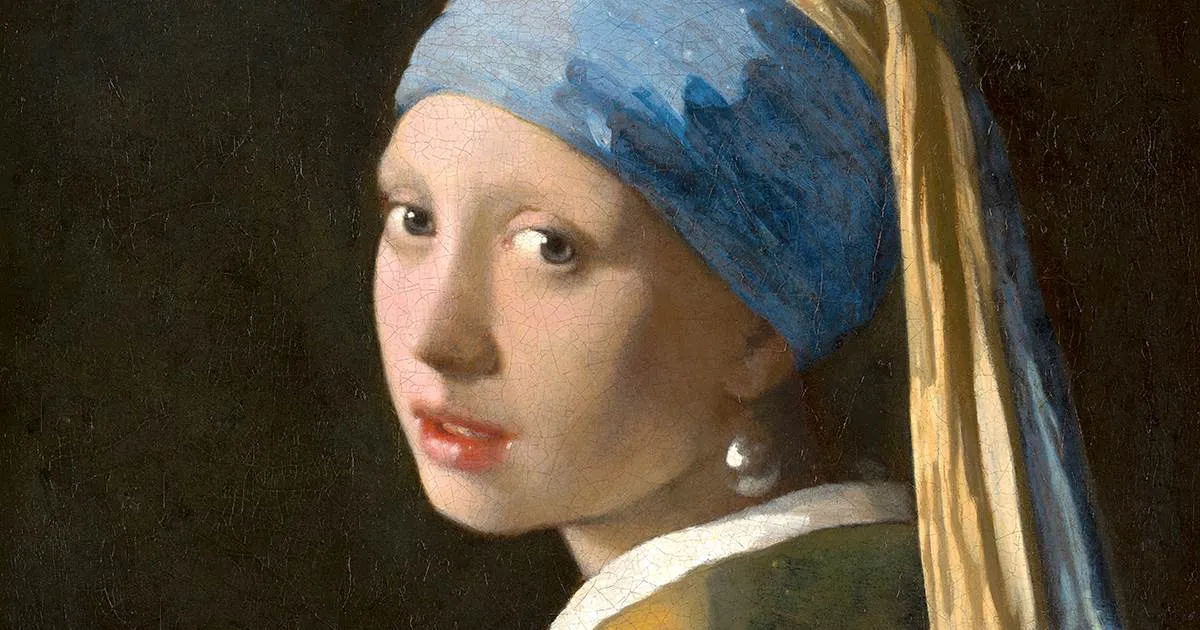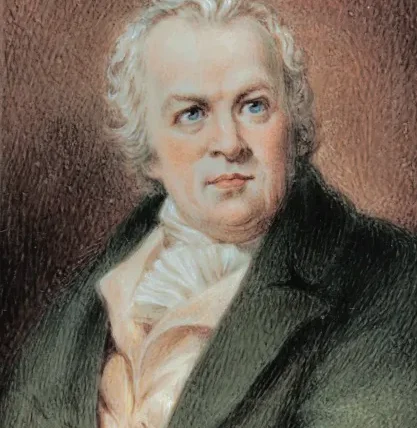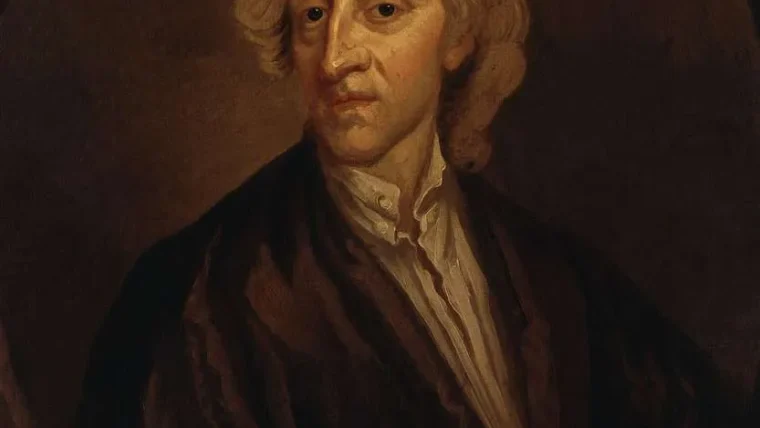Vermeer’s Childhood and Upbringing
Johannes Vermeer was born in 1632 in the city of Delft, in the Dutch Republic. His father, Reynier Janszoon, was an art dealer and innkeeper, while his mother, Digna Baltens, hailed from a prosperous family. Vermeer grew up in a relatively middle-class household, which provided him with a stable and supportive environment during his formative years.
Although little is known about Vermeer’s early education, it is believed that he received a solid foundation in reading, writing, and mathematics, as well as an understanding of Latin, which was the standard language of education at the time. It is likely that his family recognized his artistic talent early on and encouraged his creative pursuits.
Delft, the city where Vermeer spent his entire life, was known for its thriving artistic community. Growing up in this vibrant atmosphere, Vermeer was surrounded by painters and artisans who undoubtedly influenced his artistic development. The city had a prestigious art guild that promoted the study and practice of various art forms, providing Vermeer with an avenue for learning and honing his skills.
Vermeer’s upbringing in Delft also exposed him to the diverse subject matter that would later be prevalent in his paintings. The city’s landscapes, architecture, and local culture would become recurring themes in his works. Additionally, Vermeer’s exposure to the trade and commerce that characterized Delft during the Golden Age of Dutch painting likely shaped his understanding of the world and influenced his artistic style.
Influential Factors in Vermeer’s Education and Artistic Development
Vermeer’s education and artistic development were shaped by a variety of influential factors that played a significant role in his journey as an artist. One of the primary factors was his exposure to the artistic traditions of his hometown, Delft, in the Netherlands. Delft was renowned for its rich artistic heritage, and Vermeer was fortunate to grow up in an environment that valued and celebrated the arts.
Additionally, Vermeer’s family background also played a crucial role in his education and artistic development. His father, Reynier Janszoon, was a successful art dealer, and it is believed that Vermeer had access to a wide range of artistic works and materials through his father’s business. This exposure to different artists and artistic styles would have undoubtedly influenced and inspired Vermeer in his own artistic pursuits.
Furthermore, Vermeer’s participation in the Guild of Saint Luke, a prestigious artists’ guild, also had a significant impact on his education and artistic development. The guild provided Vermeer with access to a network of fellow artists, apprentices, and mentors who could offer guidance and support on his artistic journey. The guild also facilitated opportunities for Vermeer to learn from experienced masters and to collaborate with other artists, fostering his growth and enhancing his skills.
Vermeer’s education was not limited to traditional art training alone. He was also influenced by broader cultural and intellectual movements of his time, such as the scientific advancements and philosophical ideas of the Dutch Golden Age. Vermeer’s art reflects a keen attention to detail and a fascination with light and perspective, elements that were influenced by the scientific discoveries and optical theories of his era.
The Enigmatic Career of Johannes Vermeer
Johannes Vermeer, the renowned Dutch painter of the 17th century, had an enigmatic career that continues to intrigue art historians and enthusiasts to this day. Despite his talent and skill as an artist, very little is known about Vermeer’s life and the exact circumstances surrounding his artistic journey. The scarcity of historical records and the lack of personal documentation have left many gaps in our understanding of Vermeer’s career.
One of the most intriguing aspects of Vermeer’s career is the mysterious and limited number of paintings he produced. It is believed that Vermeer only created around 35 paintings throughout his lifetime, leaving us with a relatively small body of work compared to other renowned artists.
This scarcity of paintings has only added to the fascination and allure surrounding Vermeer’s art. Furthermore, the artist’s relative obscurity during his lifetime has also contributed to the enigma surrounding his career. Vermeer’s works were largely unknown outside of his hometown of Delft, and he did not achieve the level of fame and recognition that some of his contemporaries enjoyed.
Despite the limited number of paintings and the lack of recognition, Vermeer’s artistic style and technique were truly remarkable. His meticulous attention to detail, use of light and shadow, and vibrant color palette set him apart from his peers. Vermeer’s paintings often depicted domestic scenes and everyday life, with an emphasis on creating a sense of intimacy and tranquility.
His masterful use of light was particularly notable, illuminating his subjects and infusing the paintings with a sense of depth and realism.
In conclusion, the enigmatic career of Johannes Vermeer continues to captivate art enthusiasts worldwide. The scarcity of information about his life, the limited number of paintings he created, and his relatively unknown status during his lifetime all contribute to the intrigue surrounding Vermeer and his art.
Despite these mysteries, Vermeer’s unique artistic style and techniques have left an indelible mark on the world of Dutch painting, earning him a lasting legacy and a place among the great masters of art.
Exploring Vermeer’s Artistic Style and Techniques
Johannes Vermeer, one of the most influential painters of the Dutch Golden Age, developed a distinct and captivating artistic style that continues to captivate viewers even today. His meticulous attention to detail, masterful use of light, and precise brushwork set him apart from his contemporaries.
One notable feature of Vermeer’s artistic style is his extraordinary ability to capture the effects of light in his paintings. Whether it is the soft glow of sunlight streaming through a window or the subtle play of light on a subject’s face, Vermeer’s use of light adds depth and realism to his compositions. He achieved this through careful observation and a keen understanding of how different light sources interact with objects and surfaces.
In addition to his masterful handling of light, Vermeer’s paintings also showcase his extraordinary skill in rendering textures. From the delicate folds of satin fabrics to the intricate detailing of porcelain and glass, his paintings are rich with tactile qualities. Vermeer’s meticulous brushwork, characterized by thin, translucent layers of paint, creates a sense of depth and dimension, bringing his subjects to life in a way that feels almost tangible.
Another notable aspect of Vermeer’s style is his preference for a limited color palette. He often used a harmonious combination of hues, consisting of blues, greens, yellows, and warm browns. This restrained use of color creates a sense of unity and harmony in his compositions. It also allows the viewer to focus on the delicate interplay of light and shadow, as well as the intricate details within the scene.
Vermeer’s artistic techniques and style were not only innovative for his time but continue to inspire and influence artists to this day. His ability to capture the beauty and poetry of everyday life in his paintings remains a testament to his skill and artistic vision. Through his meticulous attention to detail, masterful use of light, and precise brushwork, Vermeer created a body of work that has stood the test of time and continues to captivate art enthusiasts and scholars alike.
The Themes and Subjects in Vermeer’s Paintings
Vermeer’s paintings are known for their rich and captivating themes and subjects. One of the recurring themes in Vermeer’s work is domesticity. He often depicted everyday scenes of people engaged in their daily activities within the comfort of their homes. These intimate portrayals allow viewers to get a glimpse into the private lives of the Dutch middle class during the 17th century.
In many of Vermeer’s paintings, the subjects are engaged in mundane tasks such as cooking, sewing, or reading. However, Vermeer managed to transform these seemingly ordinary activities into moments of beauty and intrigue. The careful attention to detail, the interplay of light and shadow, and the exquisite rendering of textures all contribute to the overall sense of tranquility and harmony in his compositions.
Another notable theme in Vermeer’s works is the exploration of the relationship between interior and exterior spaces. Through the depiction of open doors or windows, Vermeer invites viewers to contemplate the contrast between the coziness of the indoor settings and the expansive vistas beyond. This juxtaposition creates a sense of depth and spatial complexity, while also symbolizing the duality of public and private realms.
Additionally, Vermeer often incorporated elements of symbolism in his paintings. For example, the use of musical instruments, maps, or paintings within the scene can convey deeper meanings and evoke emotions. These objects serve as visual metaphors that hint at the complexities of human experience, such as the passage of time, the pursuit of knowledge, or the transience of beauty.
Vermeer’s Relationship with the Delft Artistic Community
In the vibrant artistic hub of Delft during the 17th century, Johannes Vermeer formed connections and collaborations that shaped his career as a painter. Despite limited historical records, it is evident that Vermeer enjoyed close ties with his fellow artists, engaging in discussions, exchanges, and collaborations that contributed to the development of his unique artistic style.
Within the Delft artistic community, Vermeer’s relationships with other painters were instrumental in his growth as an artist. He was part of a close-knit circle that included renowned painters such as Carel Fabritius, Gerard Dou, and Jan Steen. These artists often gathered at local taverns or in their studios, sharing insights, techniques, and artistic ideas. Vermeer undoubtedly benefited from this supportive network, gaining inspiration and knowledge that helped refine his own craft.
Collaborative endeavors were also prevalent among the artists of Delft, and Vermeer actively participated in these artistic ventures. One notable example is Vermeer’s collaboration with Leonard Bramer, a successful and well-regarded painter. Together, they worked on a series of painted cloths for the Great Hall of the Guild of Saint Luke in Delft. Vermeer’s contributions to this ambitious project showcased his skills as a meticulous painter, while also solidifying his position within the artistic community.
Although Vermeer’s relationships with his contemporaries played a significant role in his artistic development, it is important to note that he also maintained a distinct and individual style.
His artistic vision and meticulous attention to detail set him apart from his peers, establishing him as a master in his own right. Vermeer’s relationship with the Delft artistic community provided him with inspiration and support, but it was his unique perspective and innovative techniques that made him one of the most celebrated painters of his time.
As we delve deeper into Vermeer’s life and work, it becomes evident that his relationships within the Delft artistic community were essential to his growth as an artist. The camaraderie, knowledge-sharing, and collaborative projects fostered an environment of artistic innovation and excellence.
Vermeer’s ability to absorb influences, engage in artistic dialogue, and yet maintain his individuality are testament to his talent and vision. Through the lens of his relationships with fellow painters, we gain a broader understanding of Vermeer’s artistic journey and the profound impact he left on the Dutch art scene.
Vermeer’s Legacy and Impact on Dutch Painting
Vermeer’s legacy in Dutch painting is not only significant but also enduring. Despite being relatively unknown during his lifetime, his works have left an indelible mark on the art world and continue to captivate audiences to this day. Vermeer’s unique style and meticulous attention to detail set him apart from his contemporaries and have made him one of the most celebrated Dutch painters of all time.
One of the key aspects of Vermeer’s impact on Dutch painting lies in his ability to capture the essence of everyday life. His works often depict domestic scenes, with ordinary people engaged in simple activities. However, Vermeer’s masterful use of light and composition elevates these seemingly mundane moments into profound works of art. Through his attention to detail and skillful portrayal of light and shadow, Vermeer created a sense of realism and depth that was unparalleled in his time.
Moreover, Vermeer’s influence extended beyond his own paintings. His meticulous approach to technique and composition inspired a generation of artists, who came to be known as the “Dutch Golden Age painters.” Vermeer’s emphasis on the interplay of light and shade, as well as his mastery of color, became defining characteristics of Dutch painting during this period.
Artists such as Pieter de Hooch and Gabriel Metsu adopted Vermeer’s techniques and sought to emulate his style, further cementing his influence on the Dutch art scene.
Furthermore, Vermeer’s exquisite attention to detail and his use of perspective served as a source of inspiration for future generations of artists. His ability to recreate the texture of fabrics, the play of sunlight through glass, and the reflection on surfaces was unparalleled.
Even centuries after his death, artists and art critics continue to study Vermeer’s techniques and marvel at his technical prowess.
In conclusion, Vermeer’s legacy and impact on Dutch painting cannot be overstated. His unique style, attention to detail, and ability to capture the beauty in everyday life have made him one of the most revered painters of all time. Through his influence on subsequent artists and the enduring fascination with his works, Vermeer’s contributions to Dutch painting continue to shape and inspire the art world.
Vermeer’s Works: A Closer Look at his Masterpieces
A closer examination of Johannes Vermeer’s masterpieces reveals the artist’s exceptional skill and captivating style. His works often depict ordinary scenes from daily life, but they are imbued with a sense of tranquility and a meticulous attention to detail that sets them apart.
One of Vermeer’s most renowned paintings is “Girl with a Pearl Earring,” which showcases his remarkable ability to capture the luminosity and texture of fabrics, as well as the subtle play of light on the subject’s face. The enigmatic expression of the girl adds an air of mystery and intrigue to the painting, leaving viewers captivated and curious about her story.
Another masterpiece by Vermeer is “The Milkmaid,” a work that showcases his ability to capture the essence of everyday life in 17th-century Netherlands. The painting depicts a maid pouring milk into a bowl, with the domestic setting and simple subject matter capturing the viewer’s attention.
Vermeer’s masterful use of light, shadow, and color creates a sense of depth and realism, elevating the humble act of pouring milk into an art form. The stillness and quietude of the scene, combined with the extraordinary detail in the texture of the bread and the reflection on the pitcher, further demonstrate Vermeer’s meticulous approach to his craft.
The Mystery Surrounding Vermeer’s Personal Life
Vermeer’s personal life remains shrouded in mystery, leaving many questions surrounding the artist’s background, relationships, and daily life. Little is known about Vermeer’s childhood and upbringing, as there are few surviving records documenting this period of his life.
The artist was born in 1632 in Delft, a small city in the Netherlands, and he spent his entire life there. While some speculate that Vermeer came from a modest background, others suggest that he may have been born into a family of means, which would have influenced his access to education and artistic resources.
One of the most intriguing aspects of Vermeer’s personal life is his relationship with his family. Vermeer married Catharina Bolnes in 1653, and they had a total of fifteen children together. However, despite the large family, Vermeer’s financial struggles and the limited demand for his paintings meant that he was not able to secure a stable income to support his growing family.
This has led to speculation that Vermeer may have faced significant challenges throughout his life, both in terms of his personal and professional life. Unfortunately, the lack of concrete information about Vermeer’s personal life makes it difficult to draw definitive conclusions about the artist’s experiences and how they may have influenced his art.
The mystery surrounding Vermeer’s personal life adds to the allure of his artistic legacy. Despite the lack of information, Vermeer’s paintings continue to captivate audiences around the world.
His ability to capture moments of everyday life with such precision and skill has earned him a revered place in art history. While we may never fully uncover the details of Vermeer’s personal life, his art serves as a testament to his talent and ability to portray the beauty and complexity of the human experience. The enigmatic nature of Vermeer only adds to his status as a revered and mysterious figure in the art world.
Vermeer’s Financial Struggles and Recognition in his Lifetime
Despite being a renowned artist today, Johannes Vermeer faced significant financial struggles during his lifetime. Like many artists of his time, Vermeer relied on the patronage system to support his artistic endeavors. However, his lack of financial security was evident, as he often struggled to make ends meet and provide for his large family.
Vermeer’s financial difficulties were exacerbated by the economic downturn that occurred in the Netherlands during the 1650s. This period, known as the “Dutch economic crisis,” saw a decline in the art market and a decrease in the wealth of potential patrons. As a result, Vermeer found it increasingly challenging to sell his paintings and sustain his livelihood.
Furthermore, Vermeer’s meticulous and time-consuming painting techniques contributed to his financial struggles. He was known for his slow and deliberate approach, which involved multiple layers of thin glazes to create depth and luminosity in his works.
This method required both skill and patience but also meant that each painting took a significant amount of time to complete. Unable to produce a large volume of artworks due to this methodical process, Vermeer faced limitations in terms of generating income.
Despite these financial challenges, Vermeer did receive some recognition during his lifetime, albeit to a limited extent. His works were praised by a small circle of collectors and connoisseurs in Delft, who recognized his talent and artistic achievements.
Additionally, Vermeer was accepted as a member of the prestigious Delft painters’ guild in 1653, which granted him some professional recognition and social standing.
However, it was only in the last few years of his life that Vermeer’s paintings began to fetch higher prices and gain broader recognition outside of Delft. This newfound recognition was partially due to his association with the well-known art dealer Hendrick van Buyten.
Van Buyten not only sold Vermeer’s artworks in The Hague but also acted as an advocate for the artist, promoting his unique style and garnering attention from art enthusiasts.
Vermeer’s Posthumous Fame and Rediscovery
After the death of Johannes Vermeer in 1675, his artwork fell into obscurity and was largely forgotten. It wasn’t until the late 19th century that Vermeer’s paintings resurfaced and gained recognition once again. In 1866, French art critic Théophile Thoré-Bürger published an article about Vermeer in the magazine Gazette des Beaux-Arts, igniting a renewed interest in the artist.
Thoré-Bürger’s article praised Vermeer’s mastery of light and color, and his rediscovery led to a surge of interest in Vermeer’s works. Collectors and art enthusiasts started searching for Vermeer’s paintings, and museums began acquiring them for their collections. The art market for Vermeer’s works also experienced a boom, with his paintings becoming highly valuable and sought after.
Vermeer’s posthumous fame continued to grow throughout the 20th century, with major exhibitions dedicated to his work, both in Europe and the United States. Scholars and art historians delved deeper into Vermeer’s life and artistic techniques, unraveling the mysteries that surrounded his art. His paintings were praised for their meticulous attention to detail, use of perspective, and ability to capture ordinary moments in a captivating way.
Ultimately, Vermeer’s posthumous fame and rediscovery have solidified his place in art history as one of the greatest Dutch painters of all time. His paintings continue to captivate audiences around the world, and his influence can be seen in the works of countless artists. Vermeer’s legacy as a master of light and composition remains unparalleled, and his paintings serve as a testament to the enduring power of his artistic vision.
Analyzing Vermeer’s Contribution to Art History
Johannes Vermeer, the renowned Dutch painter of the 17th century, made a significant impact on the world of art history. His unique style, meticulous attention to detail, and masterful use of technique continue to captivate audiences to this day. Vermeer’s contribution lies not only in the beauty of his paintings but also in the innovative approach he brought to the art world.
One of Vermeer’s most noteworthy contributions was his innovative use of light. In his paintings, he effortlessly captured the effects of natural light and its interplay with objects and surfaces. This technique, known as “chiaroscuro,” added depth and realism to his works, making them appear almost lifelike. Vermeer’s skillful mastery of light remains a source of inspiration for artists today, showcasing his profound understanding of the visual language.
Another aspect of Vermeer’s contribution to art history was his unique perspective and composition. Unlike many of his contemporaries, who often focused on historical or religious subjects, Vermeer chose to portray scenes from everyday life.
His paintings depicted domestic interiors, everyday objects, and moments of quiet contemplation. Through these intimate glimpses into ordinary life, Vermeer offered a refreshing perspective on art, captivating viewers with his ability to find beauty in the seemingly mundane.
Furthermore, Vermeer’s meticulous attention to detail and his ability to capture the subtleties of textures added depth and realism to his works. From the delicate play of light on a pearl earring to the sumptuous folds of fabric in a dress, every element in Vermeer’s paintings was carefully crafted. This level of precision and detail elevated his art to a new level, showcasing his devotion to his craft and his unparalleled skill.
Vermeer’s contribution to art history extends beyond his technical prowess. His choice of subjects and themes also played a significant role in shaping the art world. By focusing on everyday life and domestic scenes, Vermeer challenged traditional notions of what was deemed worthy of artistic representation. His works celebrated the beauty and poignancy found in the ordinary, highlighting the value of introspection and observation in art.







